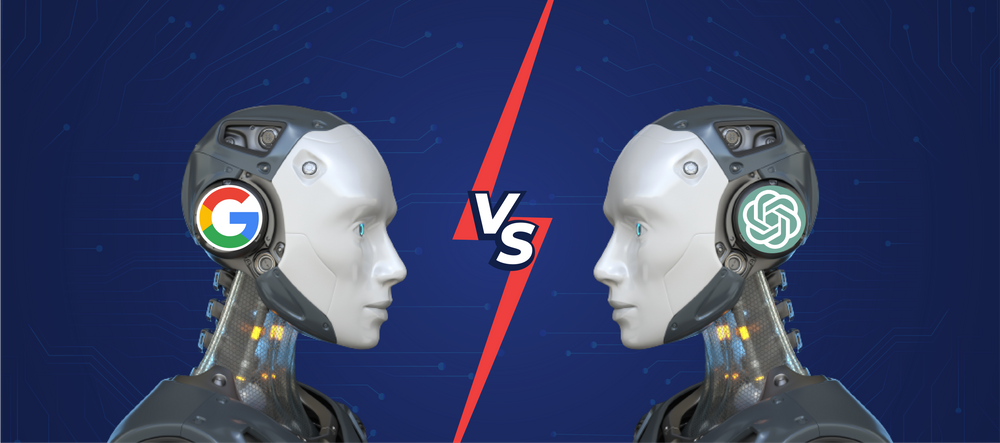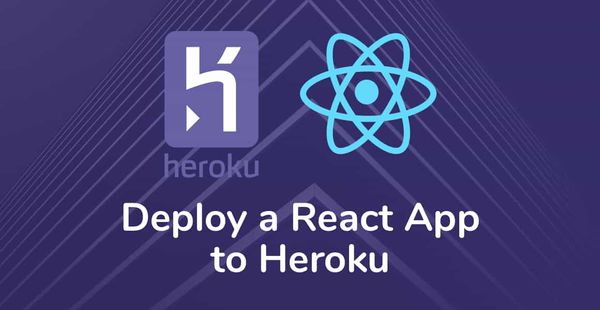Google BARD vs OpenAI's ChatGPT: A Battle of the AI Language Models
Have you ever tried to talk to a chatbot and felt like you were stuck in a robotic conversation? It's like reading from a script that doesn't understand your unique needs. But what if there was an AI technology that could create a personalized and engaging conversational experience just for you?
That's the magic of conversational AI solutions that have become increasingly popular in recent years by providing a more human-like experience to their users. It's like having your very own AI personal assistant, always there to listen, learn, and respond to your needs.
With the power of natural language processing and machine learning, conversational AI solutions like Google BARD and OpenAI's ChatGPT are leading the charge by transforming the way we interact with technology.
In this blog, let's take a closer look at two of the most advanced conversational AI services out there: Google Bard and Open AI's ChatGPT.
What is Google Bard?
Meet Google Bard - the latest innovation from the tech giant that is set to take the world of AI by storm. This state-of-the-art AI model uses cutting-edge machine learning algorithms to analyze human language and provide more contextually relevant responses. Think of it as a virtual language expert that can understand the nuances and complexities of human communication. In other words, it can carry on a conversation with you just like a human.
It can understand the context of a conversation and respond accordingly, making it a perfect tool for chatbots, virtual assistants, and customer service. Whether you're a business owner, developer, or simply a tech enthusiast, Google Bard is definitely worth keeping an eye on.
Benefits of Google Bard
Google Bard represents a breakthrough in AI technology that has the potential to transform the way we interact with information and make it more useful, engaging, and accessible to everyone. Here are some of the benefits:
- Bard combines the power of language models with the depth of the world's knowledge to offer original and insightful information.
- Bard uses cutting-edge technologies like LaMDA, PaLM, Imagen, and MusicLM, which combine language, images, and audio with video to create engaging ways for people to interact with information.
- When there is no one correct answer to a question, Bard can be useful in synthesizing insights. This means that it can help you make sense of complex information and draw conclusions that might not be obvious at first glance.
- Lastly, Bard searches for multiple sources of information to ensure that you get a well-rounded perspective on a topic.
And the best part? These new AI features will begin rolling out on Google Search soon, making it easier to access the information you need.
How to access Google Bard?
While Google Bard is not yet accessible to the general public and is only available for tests and trials, CEO Sundar Pichai has promised to combine external feedback with internal testing to ensure that Bard's responses meet high standards for quality, safety, and real-world information. So stay tuned for when Google Bard becomes available to everyone and experience a revolutionary way to connect with information.
What is ChatGPT?
ChatGPT, a language model developed by OpenAI, is designed to engage in conversations, answer questions, and generate text based on the input it receives. As one of the most advanced conversational AI models available, ChatGPT has been trained on a vast corpus of text data, allowing it to understand and respond to a wide range of topics and styles with remarkable accuracy and naturalness.
Whether you're looking for information, advice, or just some engaging conversation, ChatGPT is always ready to help. With its ability to understand and process human language, ChatGPT represents a major step forward in the development of intelligent machines, offering a glimpse of what the future of artificial intelligence may hold.
How Does ChatGPT Work?
Chat GPT is powered by a neural network that has been trained on a vast amount of data from the internet. This means that the AI chatbot can understand and respond to a wide range of queries, from simple questions like "What's the weather like today?" to more complex requests like "Can you help me plan a trip to Canada?"
To use Chat GPT, all you need to do is sign up on ChatGPT and type in your query in the chat window. When a user inputs a question or prompt, ChatGPT analyzes the text and generates a response based on its understanding of the language and the context of the input.
This process involves multiple layers of analysis, including tokenization (breaking the text into individual words), understanding grammar and syntax, and generating appropriate responses based on the user's input.
Benefits of ChatGPT
- ChatGPT is always available to answer your questions or engage in a conversation.
- It has a wide range of knowledge at its disposal.
- Saves your time and effort by providing quick and easy answers.
- ChatGPT's conversational interface provides a more natural and engaging experience.
- ChatGPT can learn from your interactions and personalize its responses to your interests and preferences.
- It is scalable and can handle multiple conversations at once.
- ChatGPT respects your privacy and doesn't retain personal information.
Limitations of ChatGPT
While ChatGPT is a powerful tool, it does have some limitations:
- ChatGPT may not have information on specific topics outside of its training data.
- Responses generated by ChatGPT may reflect societal biases present in the data it was trained on.
- ChatGPT may not be able to provide relevant or appropriate responses due to a lack of contextual understanding.
- It cannot understand or respond appropriately to human emotions.
- ChatGPT cannot learn from experience just like we humans can.
How are they different?
Chat GPT and Google Bard are two different conversational AI solutions with unique abilities. Here’s how they differ:
Bard has an extensive database of knowledge, thanks to its integration with Google's search engine. It has access to the latest information on the internet, making it more up-to-date and able to provide fresher insights than Chat GPT.
Microsoft-backed Chat GPT is known to make up information or provide incorrect data, Bard is the go-to AI model for reliable, factual information.
It can explain complex topics in an easy-to-understand manner that anyone can grasp. And the best part? It's designed to encourage learning and curiosity in people of all ages, including children.
On the other hand, Chat GPT only creates content in response to a prompt - it doesn't have the same expansive knowledge base or ability to simplify complex concepts.
So, which conversational AI solution is the winner here? Only time will tell. But one thing's for sure: Bard seems to have the edge in terms of sheer knowledge and accuracy.
When will Bard be available?
As of now, Google is yet to announce an official release date for Bard. However, given the progress that has already been made in its development, it's likely that we'll see it become available in the near future. When it does become available, it will undoubtedly be a major milestone in the world of conversational AI.
Conclusion
The beauty of AI technology is that it's continuously growing and changing, and the battle of Google Bard vs. ChatGPT is just the beginning. Ultimately, the success of AI chatbots will depend on their ability to adapt to the needs of their users and deliver personalized experiences.
With the possibilities of future advancements in AI, it's impossible to say which technology will come out on top in the future. But one thing is for sure, the world of AI chatbots is an exciting space to watch.




